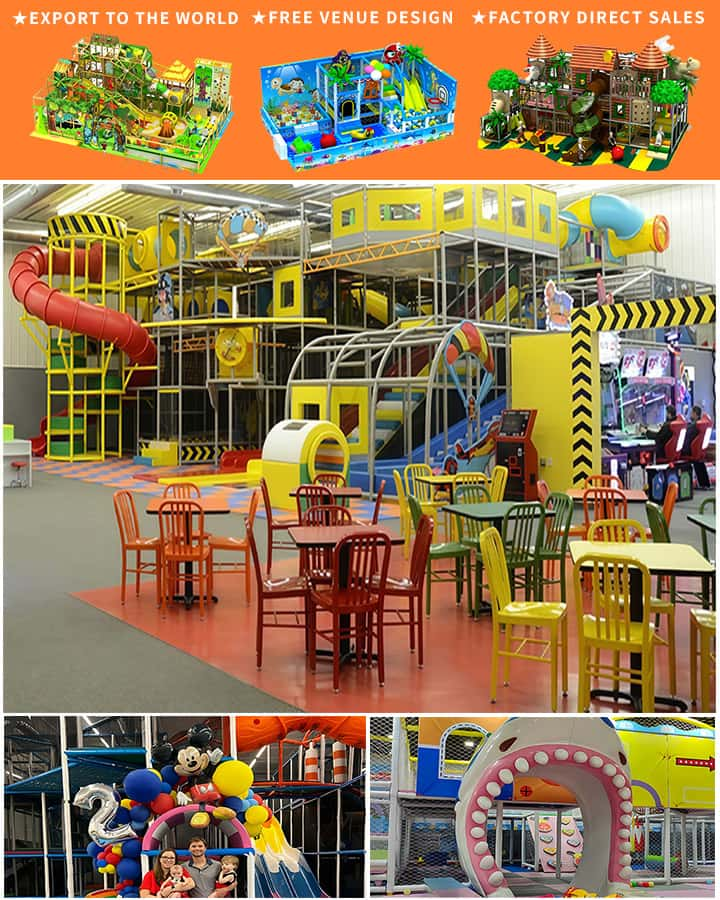Ensuring that children have a safe and enjoyable environment to play in is a priority for many parents and caregivers. One of the best ways to achieve this is by investing in high-quality kids’ indoor soft play equipment. This article explores the various types of indoor soft play equipment, their benefits, and how they can create a stimulating environment for children of all ages.
Benefits of Indoor Soft Play Equipment
Safety First: Soft play equipment is specifically designed with safety in mind. Made from non-toxic, durable materials, these structures are cushioned to prevent injuries from falls.
Physical Development: These setups encourage physical activity, helping children develop coordination, balance, and motor skills as they navigate through climbing walls, tunnels, and trampolines.
Social Skills: Interaction with other children during playtime fosters social development. Shared experiences help children learn to cooperate, take turns, and communicate effectively.
Mental Stimulation: Many soft play sets include elements that stimulate cognitive development, such as puzzles and interactive panels.
Stress Relief: A safe, engaging play environment provides an excellent outlet for kids to channel their energy, reducing stress and promoting overall well-being.
Types of Indoor Soft Play Equipment

Climbing Frames and Walls: Perfect for young adventurers, climbing frames offer various levels of difficulty that challenge children’s physical abilities and boost their confidence.
Play Tunnels: These versatile pieces provide endless fun. Children can crawl, hide, and explore, which enhances their sense of curiosity and discovery.
Trampolines: Trampolines add a dynamic element to indoor play areas. They promote cardiovascular health and improve agility and strength while being incredibly fun.
Slides: From gentle slopes to spiraling towers, slides are always a hit among kids. They add excitement and variety to the play area.
Ball Pools: Filled with colorful balls, ball pools are a sensory delight. They also serve as a great place for kids to practice throwing and catching, enhancing hand-eye coordination.
Interactive Toys and Games: Many soft play sets include interactive elements like musical toys, shape sorters, and mini basketball hoops, adding educational value to the fun.
Obstacle Courses: Designed to mimic obstacle courses found outdoors, these setups combine multiple pieces of equipment, offering comprehensive physical challenges.
Choosing the Right Equipment
When selecting indoor soft play equipment, consider the following factors:
- Age Appropriateness: Ensure the equipment is suitable for your child’s age to maximize safety and enjoyment.
- Space Requirements: Assess the available space in your home or facility to choose equipment that fits comfortably.
- Durability: Look for high-quality materials that can withstand wear and tear from regular use.
- Portability: Some equipment is foldable or modular, making it easy to store or move when needed.
- Safety Standards: Always check that the equipment meets relevant safety standards and certifications.
Maintenance Tips
To keep indoor soft play equipment in top condition, follow these maintenance tips:
- Regular Cleaning: Wipe down surfaces regularly to remove dirt and germs. Use mild soap and water; avoid harsh chemicals.
- Inspection: Periodically check for any signs of damage or wear. Replace or repair parts as necessary to maintain safety.
- Storage: Store equipment properly to extend its lifespan and ensure it remains in good condition when not in use.
Conclusion
Kids’ indoor soft play equipment offers a fantastic blend of safety, fun, and developmental benefits. From climbing walls to ball pools, these items create an engaging environment where children can grow physically, socially, and mentally. By choosing the right equipment and maintaining it properly, you can provide a delightful play experience that will be cherished for years to come.




